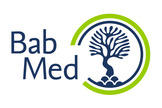BabMed - Babylonian Medicine
BabMed represents the first comprehensive study of ancient Babylonian medical science since the decipherment of the cuneiform writing system. The BabMed project aims to make Babylonian medical texts and knowledge – the largest ancient collection of medical data before Hippocrates – available not only for the specialist, but for the wider public as well. This objective is essential since almost all these texts have so far only been published in cuneiform copies or remain completely unpublished; they are hardly accessible to an Assyriologist not familiar with them, and much less so for the wider scientific community.
The second central objective of BabMed is to study medicine in the Babylonian Talmud, in order to explore comparisons with later medical traditions from the same region in Aramaic, another language of ancient Mesopotamia. BabMed proposes that Babylonian medicine survived the death of cuneiform script and was preserved in part in the local Aramaic of the Babylonian Talmud – a unique text which straddles the borders of Greco-Roman Palestine and Persian Babylonia and mirrors the scientific thinking of both worlds.
BabMed will also pursue parallels between Babylonian medicine on the one hand and Hippocratic and Galenic traditions, Discorides, the Syriac Book of Medicines, and late Egyptian medicine on the other, in order to clarify transfers of medical knowledge from Mesopotamia into later traditions. In doing so, BabMed will draw attention to the Mesopotamian contributions both in the Eastern and Western world thus challenging the eurocentric predominance within the history of medicine.
Healthcare is of central concern for every society, touching all spheres of daily life, cultural practice and phases of human existence, from birth to old age. It therefore forms an important topic of discussion for every period of history – from the medical information in sources from ancient Babylonia and Egypt, to the healthcare insurance question today. Babylonian medical practice and knowledge, witnessed by hundreds of cuneiform texts written on clay tablets (see photo) attest to a medical craft deeply rooted in observation on the one hand, and practical experience on the other. The role of observation as the basis for prognosis is witnessed by a large number of diagnostic texts, while long-term empirical experience formed the basis for the impressive knowledge of healing substances that Mesopotamian medical specialists had at their command. This knowledge is seen in therapeutic texts (recipes, prescriptions) and in lists of materia medica.
The array of medicaments used by the healers included diverse plants, minerals and animal substances, which were prepared for a variety of treatments, from potions and ointments to bandages and tampons. The application of drugs was generally preferred to surgery, which, due to its risks, was restricted to simple interventions.
Another characteristic of ancient Mesopotamian medicine was its relationship to the domain of religion and belief. Many diseases were caused by evil demons, angry gods, or witchcraft, which needed to be healed through divine intervention as well as through medical treatment. In such a cultural setting it is hardly surprising that many therapies were combined with ritual actions and incantations invoking divine assistance, in addition to numerous prescriptions, which are clearly 'secular'.The influence of religion on Babylonian medicine is also due to the fact that some of the professionals concerned with healthcare were priests connected with temples practicing the arts of ritual and incantations. Many medical texts known to date belonged to libraries found in temples, royal palaces and the houses of ritual specialists, and as such represent abstract or theoretical medicine rather than praxis per se and are hence comparable with Greek medical treatises, as found in the Hippocratic corpus and elsewhere.
BabMed will investigate the central aspects of Babylonian medicine, especially the interrelations between native concepts of the human body and physiology, disease concepts, and different treatments, be they medical or ritual in character. On the other hand, the project will pursue comparisons with medical theories and practices found in other ancient cultures and their systems of healing.

